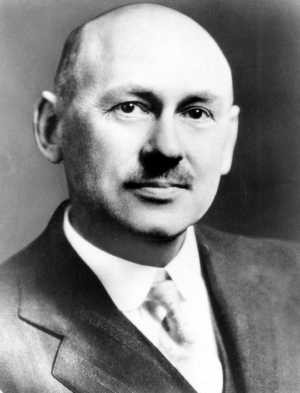 SKC Films Library SKC Films Library |
| |
| SKC Films Library >> Technology >> Rocket Science |
 Robert Goddard Robert Goddardbuilder of liquid-fueled rockets Robert Hutchings Goddard was born in Worcester, Massachusetts, on October 5, 1882. He first became interested in science as a child, when his father showed him how to generate static electricity on the carpet. When he was 16 he tried to construct a balloon from aluminum, but abandoned the project after nearly five weeks of work. His interest in space began at the same time, after he read War of the Worlds, by H.G. Wells. After graduating from South High School in Worcester, Goddard enrolled at Worcester Polytechnic Institute, where he quickly impressed the head of the physics department, A. Wilmer Duff, who hired him on as a laboratory assistant and tutor. While still an undergraduate, Goddard wrote a paper proposing a method for "balancing aeroplanes," and submitted the idea to Scientific American, which published the paper in 1907. He received his Bachelor of Science degree in Physics in 1908, and then enrolled at Clark University in the fall of that year. His first writing on the possibility of a liquid-fueled rocket came in February 1909. He received his Master of Arts degree in 1910, and then completed his Doctor of Philosophy in 1911. He stayed for another year at Clark as an honorary fellow in physics, and in 1912, he accepted a research fellowship at Princeton University. In early 1913, Goddard was stricken by tuberculosis and forced to leave Princeton; he returned to Worcester, where he began a prolonged period of recovery. It was during this recuperative period that Goddard began his most important work. On July 7, 1914, he received a patent for a multi-stage rocket; on July 14, 1914, he received a patent for a rocket fueled with gasoline and liquid nitrous oxide. By the fall of 1914, Goddard's health had improved enough for him to accept a part-time teaching position at Clark University. By 1916, his rocket research had become too expensive for his teaching salary to support, so he began soliciting financial assistance from outside sponsors; the Smithsonian Institution was the first to provide such help, agreeing to a five-year grant totaling $5,000. In 1919, the Smithsonian Institution published A Method of Reaching Extreme Altitudes, in which Goddard explained his mathematical theories of rocket flight, his research in solid-fuel and liquid-fuel rockets, and the possibilities of exploring space. Goddard launched his first liquid-fueled rocket from Auburn, Massachusetts, on March 16, 1926. The rocket, which he dubbed "Nell," rose just 41 feet during a 2.5-second flight, but it successfully demonstrated that liquid-fuel propellants were possible. left: Robert Goddard preparing to launch his first liquid-fueled rocket. In July 1929, Goddard's research came to the attention of aviation pioneer Charles A. Lindbergh, who had begun to wonder what would become of aviation in the distant future. Lindbergh contacted Goddard in November of that year, and by the end of the year Lindbergh was attempting to use his name to help secure funding for Goddard's research. Lindbergh eventually found an ally in Daniel Guggenheim, who agreed to fund Goddard's research over the next four years for a total of $100,000. The Guggenheim family would continue to support Goddard's work in the years to follow. Goddard's Massachusetts neighbors had become increasingly alarmed at his rockets flying over their heads, and Goddard himself desired more open space in which to carry out his work. With financial backing now in place, he relocated to Roswell, New Mexico, where he worked in near isolation for a dozen years. During that time he flew a rocket faster than the speed of sound, dveloped and tested a system of gyroscopic stabilization, and received dozens of patents for multistage rockets, propellent pumps, variable thrust engines, etc. Although he brought his work in rocketry to the attention of the United States Army, he was constantly rebuffed, as the Army failed to grasp the military application of rockets. right: Robert Goddard and three assistants prepare a pump-type rocket for testing on January 31, 1940. Nazi Germany, however, did take an interest in Goddard's research. Wernher von Braun relied on Goddard's plans when he developed the V-2 rockets during World War II. Before war actually broke out, German scientists contacted Goddard directly with technical questions. During the war, a German agent managed to infiltrate Goddard's "inner circle" and leak information to the Germans. After the Army declined his offer to develop rockets, Goddard gave up his preferred field to work on experimental aircraft for the U.S. Navy. After the war, Goddard was able to inspect captured German V-2's, many components of which he recognized. However, Goddard never designed nor built another rocket of his own. Robert H. Goddard died in Baltimore, Maryland, of throat cancer, on August 10, 1945. He is buried in Hope Cemetery, Worcester, Massachusetts. Goddard was awarded a total of 214 patents for his work, 83 of which he received during his lifetime. The Goddard Space Flight Center, established in 1959, is named in his honor, as is Goddard Crater, on the Moon. Goddard is also the namesake for: the Goddard School of Science and Technology, an elementary school in Worcester, established in 1992; the Goddard Library at Clark University; Goddard Hall at Worcester Polytechnic Institute, the home of the Institute's Chemical Engineering Department; and, the Robert H. Goddard High School in Roswell, New Mexico. SEE ALSO |
SKC Films Library >> Technology >> Rocket Science This page was last updated on January 27, 2017. |